Overview
- Features: Mausoleum built in Mughal architectural style similar to the Taj Mahal
- Opening Times: dawn to 10pm; daily
- Best Time to Visit: Late October to early March
- Duration: 1 to 2 hours
- Travelled By: Auto rickshaw
- Cost: Indian/foreigner Rs 5/100
- Address: Begumpura, Aurangabad, Maharashtra, India
- Type: Shrine
Author Reviews[display_rating_item_results rating_form_id=”2″ rating_entry_ids=”1″ show_category_filter=”false” show_options=”true” result_type=”star_rating” preserve_max_rating=”true” show_title=”false” show_count=”false” ]
Total Rating: [display_rating_result rating_form_id=”2″ show_count=”false” show_rich_snippets=true] [accordions load=”1″] [accordion title=”User Reviews” last] [display_rating_item_results rating_form_id=”5″ show_options=”true” result_type=”star_rating” preserve_max_rating=”true” show_title=”false” show_count=”true” show_rich_snippets=true] [/accordion] [accordion title=”Add Review”][display_rating_form show_email_input=”true” show_comment_textarea=”true” show_name_input=”true” rating_form_id=”5″] [/accordion] [/accordions]
Summary
Known as the ‘Poor Man’s Taj’, Bibi ka Maqbara was built by Aurangzeb’s son as a mausoleum for his mother, Begum Rabia Daurani in the late 17th century. Modelled along the lines of the Taj Mahal, only the bottom 2 metres is made of marble; the rest is a cheap basalt and plaster construction.
Bibi Ka Maqbara
Built by Aurangzeb’s son, Prince Azam Khan in 1679 as a mausoleum for his mother, Begum Rabia-ud-Daurani, Bibi ka Maqbara (“Tomb of the Lady”) is widely known as the ‘poor man’s Taj’ or Dakkhani Taj (“Taj of the Deccan”) because it bears a striking resemblance to the famous Taj Mahal, the mausoleum of his grandmother, Mumtaz Mahal.
The classic lines of a garden tomb give the mausoleum an impressive setting. However, it is less impressive close up. Modelled on the Taj Mahal, which was completed 25 years earlier, it is about half its size. Far less money was spent (Rs 700,000) and the comparative poverty of the finish is immediately obvious. Marble has been used for the bottom 2 metres of the mausoleum and four of the jali screens, but plaster and lime mortar has been used for the rest of the construction. The proportions are cramped and the minarets are too heavy in relation to the main mausoleum.
[singlepic id=1865 w=720 h=560 float=center]
Despite its failings it is one of the finest buildings of its period and the principal monument of Aurangabad. It is the only example of Mughal architecture of its kind in the Deccan plateau. The brass entrance door carries an inscription which says Ata-ullah was the chief architect, Hanspat Rai, the engineer, and Haibat Rai the maker of the door. Ata-ullah was the son of Ustad Ahmad Lahauri, the principal designer of the Taj Mahal.
Entry to the mausoleum is through a main entrance gate from the South, which has foliage designs on brass plate covering the wooden door. After passing through the entrance there is a small water tank and a low profile screen wall that leads to the mausoleum. The screened pathway has a series of fountains in the centre.
[singlepic id=1863 w=720 h=560 float=center]
The mausoleum is laid out in a Charbagh (“four sections”) layout and stands at the centre of a huge enclosure. Baradaris or pillared pavilions are located in the North, East and Western parts of the enclosure wall. The high enclosure wall is crenellated with pointed arched recesses and bastions at regular intervals. The recesses are divided by pilasters, crowned with small minarets.
The mausoleum is built on a high square platform with four minarets at its corners, which is approached by a flight of steps from the three sides. A mosque is found to the west of the main structure, which was a later addition by the Nizam of Hyderabad, resulting in closure of the entrance from the west side.
[singlepic id=1874 w=720 h=560 float=center]
The mausoleum is encased with marble up to the dado level. Above the dado level, it is constructed of basaltic trap up to the base of dome; the dome is built of marble. A fine plaster covers the basaltic trap and gives a fine polished finish. The mausoleum is adorned with fine stucco decorations. It is crowned by a dome pierced with trellis works and accompanying panels decorated with flower designs.
[singlepic id=1873 w=720 h=560 float=center]
[singlepic id=1872 w=720 h=560 float=center]
[singlepic id=1866 w=720 h=560 float=center]
The mortal remains of Rabia Daurani are placed below the ground level, surrounded by an octagonal marble screen with exquisite designs, which can be approached by a descending flight of steps. The roof of this chamber is pierced by an octagonal opening with a low barricaded marble screen. This allows the tomb to be viewed from the ground level through this octagonal opening.
[singlepic id=1869 w=720 h=560 float=center]
[singlepic id=1864 w=720 h=560 float=center]
On the tomb itself, in place of a marble slab, there is bare earth covered with a decorated cloth, a sign of humility. Light enters through a precisely angled shaft, allowing the early morning sun’s rays to light the tomb for three minutes. The second tomb in the corner is said to be that of Rabia Daurani’s nurse.
[singlepic id=1868 w=720 h=560 float=center]
The gardens and area surrounding the mausoleum is pretty with green lawns and manicured flower beds along the pathway. Taking a walk around the grounds is relaxing and it’s a great place to get away from the hustle and bustle of the city.
Getting to & from Bibi ka Maqbara
Bibi ka Maqbara is located about 5 kms from the city centre. To get here, take an auto rickshaw or taxi to the main entrance gate. There is a parking area in front of the main entrance gate where several auto rickshaws and taxis wait for passengers. You can either ask the auto or taxi driver to wait or you can hail another vehicle upon your return. Alternatively, you can organise a private car with chauffeur from your hotel or travel agency.



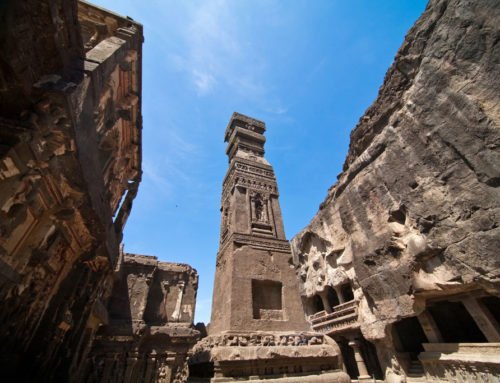
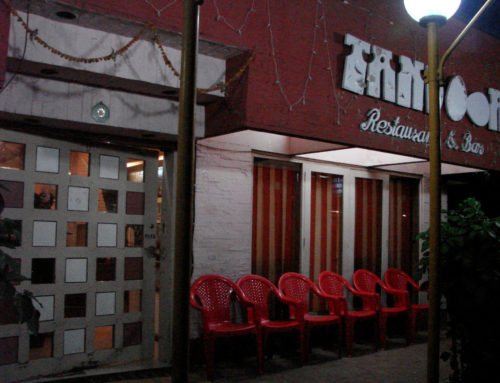
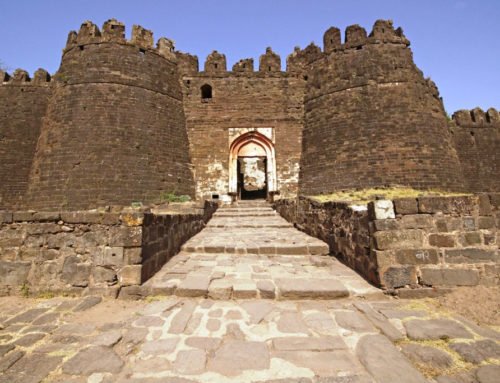
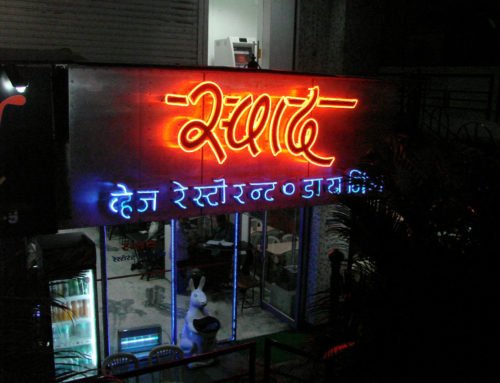
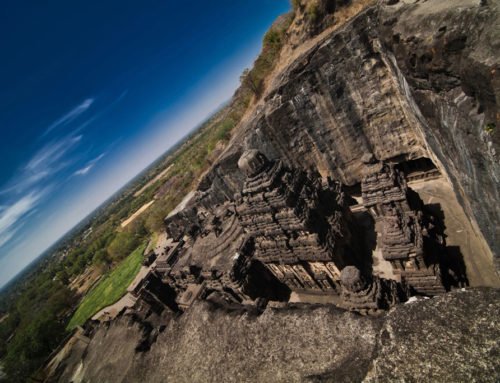
I enjoyed my visit to the Bibi ka Maqbara in Aurangabad even though the mausoleum is not made of marble. My wife really liked the gardens there.
Chris,
The lower part of the mausoleum (about 2 metres) is indeed made of marble; the rest is not.